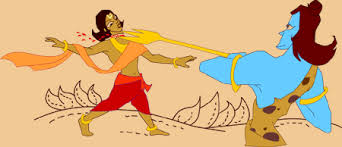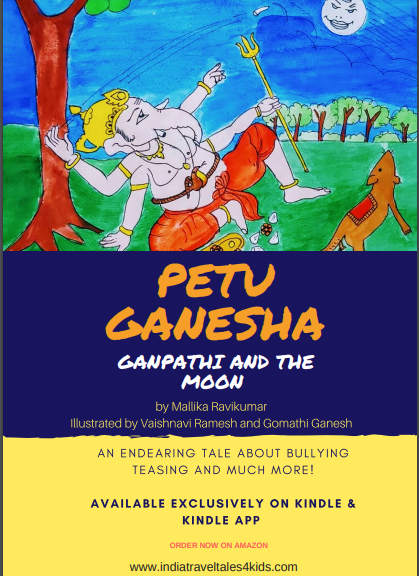My son was petrified of Shiva and Ganesha for a long time!
From the age of 3 to 5, he wouldn’t step anywhere near their images or idols.
The Reason? The Story of Shiva beheading Ganesha and replacing it with the head of an Elephant had him dreading them both.
The story was too gory. Unbelievably violent.
It was only when I saw it from the eyes of a three-year old that I realized how unsuitable it was to be a bed-time tale!
Someone had gifted us a book with Ganesha stories and I had read him the story from there, without thinking too much about it.
Comic and Children’s books today are full of detailed illustrations (including the blood and gore). Unlike the way we heard these stories from parents and grandparents, devoid of graphic details, today’s children see visual images and little is left to imagination.

After my son’s reaction (he wept for hours and couldn’t sleep after hearing the story), I began to think more seriously about the question.
“Why must we tell our Children mythological stories that are violent, patriarchal and outdated?”
I put the question to many people. I received many answers.
- The Philosophically inclined said the story signifies a deeper meaning and gave me various interpretations;
- The Religious and the Devout told me these were tales about Gods and not to be judged by human standards!
- The Mystic folks told me these kind of stories were symbolic and not to be taken literally;
Hmm…well, honestly, none of them satisfied the bedrock of my question – Why should we tell kids these stories?
At a Children’s Literature Festival I attended last year in New Delhi, I met Mythologist and Author Devdutt Patnaik. Having met him before at other Mythology-related events, I put the same question to him.
For the very first time, I found an answer that satisfied me.
I was pleasantly surprised when Patnaik wrote about it in the papers for the Ganesha Festival in 2017 – and he started the piece with my son’s question!

Here is the link to his post – so you can hear (read) it straight from the horse’s mouth . He refers to me as a well-meaning but poorly informed rationalist in the piece – a label that I must accept, at least as far as this question was concerned 🙂
In summary, what Devdutt said in answer to my question, was basically this –
- Do not equate mythological stories with fairy tales/bed-time tales for children;
- One must use discretion when one picks a mythological story to narrate to children;
- Not all mythological stories are suitable to be narrated to children;
There!
That was the simple answer I was looking for.
These stories are not meant for Kids!
Particularly with hyper-graphic illustrations!
As a student of Mythology, History and Culture, I know there are plenty of mythological stories that are full of violence and questionable moral standards. Not just Indian mythology – but myths of other parts of the world – in particular Norse Myths, are also extremely violent and disturbing.
Whether they have deeper philosophical and symbolic meanings or not – is not something I have any expertise to comment upon.
But as a parent and a citizen of the 21st century, I can see that many of these stories are not suitable to narrate to children in the modern era.
And yet we continue to recount them.
If one wished to dig into the vast repository of Mythology to tell children stories, there are many stories that are balanced, non-violent and suitable for the sensibilities of the current day and age.
So Think before you Pick!

Weed out stories that are patriarchal, violent and discriminatory – they may have set the moral compass in another day and age – they no longer hold fort now!
